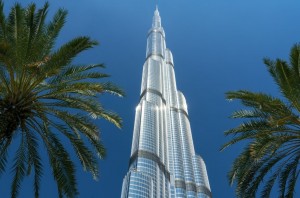One of the most impressive things in architecture is how we’ve continued to push the boundaries of what we can build. New technologies, materials, and techniques allow us to create structures on a larger and larger scale. This leads to some of the most impressive properties in the world, from housing to commercial architecture.
Looking at the tallest buildings in the world today, it is surprising there was a time when it was scary to build between 7 and 10 storeys. They are tiny now. The Burj Khalifa, currently the tallest skyscraper, by comparison is over 200 storeys, with over 150 habitable floors.
However, there are a number of challenges with super tall buildings, especially as they age. Let’s have a look at some of them and how to tackle the issues.
Movement
 Easily the biggest issue with super tall buildings is the fact that they sway. Strong wind can lead to bad swaying, sometimes as much as a metre. While the designs can allow for this to ensure the structures are stable, it can cause other problems.
Easily the biggest issue with super tall buildings is the fact that they sway. Strong wind can lead to bad swaying, sometimes as much as a metre. While the designs can allow for this to ensure the structures are stable, it can cause other problems.
A noteworthy issue is the movement can have a big impact on elevators. The cables will move, meaning they operate slower or need to be shut down entirely for safety. That can mean people are unable to access homes, offices, and other amenities in buildings. It is vital to plan for this if you want high rise residential, mixed use, and commercial architecture to be successful.
The movement can also cause a lot of noise. A major cause is creaking walls. They can get so noisy that people need to install additional insulation to improve the acoustics.
Plumbing failure
Another challenge is to keep the plumbing functioning effectively. It can be tricky to pump water up hundreds of metres. Problems can result in poor pressure and low supplies. This puts more impetus on mechanical floors and equipment.
Leaks are also a huge concern. The sheer size and complexity of plumbing systems in super tall buildings and massive commercial architecture means there is a higher chance of leaking. It is trickier to maintain the systems, and movement can cause damage. So, there needs to be more care when designing them.
Wind and shadow
It isn’t just things with the buildings themselves that can become a problem with time. There can also be an impact on the area around them. Most crucially, they can lead to wind corridors. That can make it very uncomfortable at street level.
Massive buildings can also cast huge shadows. In the worst cases they can cover hundreds of metres. That can cause big issues, making areas around the buildings feel inhospitable and putting neighbouring properties in shadow.
The bright side
While there are challenges as super tall buildings age, it is not all doom and gloom. There is a silver lining in the fact that they encourage people to continue advancing technology, engineering, and architectural practices. That can keep the whole construction industry moving forward.
Do you want some help with commercial architecture?
Coffey Architects is a team you can rely on to anticipate the various challenges with buildings. We can deliver designs that reduce the risk of negatives like overshadowing, wind issues, and maintenance problems. Our goal is to ensure that every property will be successful for a long time.
So, if you want to work with us to design commercial architecture or other buildings, please get in touch. We’d love to see what you have in mind.